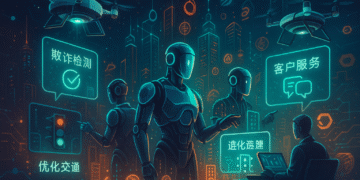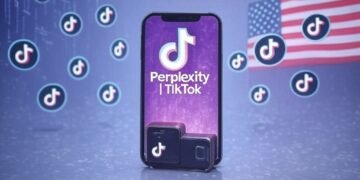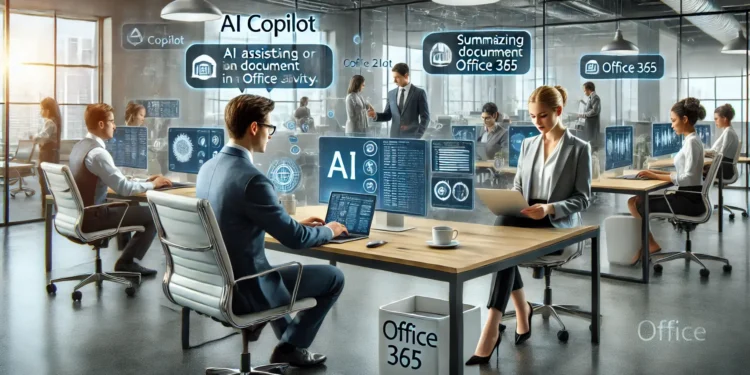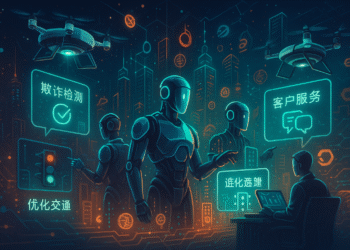Artificial intelligence has long been heralded as both a transformative force and a disruptive threat to the modern workplace. The latest advancements in AI, particularly in the realm of large language models and generative AI, have rekindled the debate over whether AI will enhance human productivity or displace significant portions of the workforce. Microsoft’s integration of AI into its core products, particularly Office 365 and Windows 11, represents one of the most aggressive moves yet in embedding AI into everyday work environments. The introduction of AI-powered tools such as Microsoft’s Copilot is a watershed moment in the evolution of workplace technology. The history of automation has always walked a fine line between augmentation and replacement—from the mechanization of agriculture to the rise of industrial robots. The modern AI revolution, however, is unique in that it targets cognitive labor rather than purely manual tasks. With AI now embedded into widely used productivity suites, the implications for businesses, employees, and policymakers are profound. Microsoft’s Copilot, which seamlessly integrates with Word, Excel, PowerPoint, and Teams, represents a radical shift in how knowledge work is conducted. But will it be a tool for empowerment, or does it signal the beginning of large-scale job displacement?
The concept of AI assisting in workplace productivity is not new. Early attempts at machine intelligence in business environments date back to expert systems in the 1980s, which sought to replicate human decision-making in specialized fields such as medical diagnosis and financial forecasting. The 1990s and early 2000s saw the rise of rule-based automation tools that enabled businesses to streamline operations, but these lacked the ability to process natural language or adapt to dynamic workflows. The advent of machine learning in the 2010s brought significant improvements, with AI capable of analyzing large datasets, identifying patterns, and making predictions. However, these systems still required human oversight and intervention.
With the development of deep learning and transformer architectures—first pioneered by Google in the landmark paper “Attention Is All You Need”—AI models became exponentially more powerful. OpenAI’s release of GPT-3 in 2020 demonstrated that AI could generate text indistinguishable from human writing, setting the stage for widespread adoption in content creation, coding assistance, and automated communication. GPT-4 further refined these capabilities by improving contextual understanding, logical coherence, and multimodal processing.
While OpenAI and other research institutions push the boundaries of what AI can achieve, Microsoft has taken a pragmatic approach by embedding these models into workplace software that billions of users rely on daily. Microsoft’s partnership with OpenAI has allowed it to integrate GPT models into Office 365, offering real-time assistance for writing, data analysis, and project management. Dubbed “Copilot,” this AI integration is designed not to replace human workers but to assist them in tedious, repetitive, or complex tasks. However, the long-term implications of AI-driven automation remain an open question.
Microsoft’s Copilot is fundamentally an AI assistant embedded within Office applications, leveraging OpenAI’s latest models to provide intelligent recommendations and automate routine workflows. In Word, Copilot can draft entire reports, summarize lengthy documents, and suggest edits based on tone and readability. In Excel, it can analyze datasets, generate charts, and create complex formulas based on plain-language prompts. PowerPoint users can transform bullet points into fully designed slide decks with automated layouts and image suggestions. Meanwhile, in Teams, Copilot acts as a meeting assistant, transcribing discussions, summarizing key takeaways, and suggesting follow-up actions.
On the surface, these features promise a dramatic increase in productivity. Employees no longer need to spend hours formatting documents, analyzing spreadsheets, or organizing meeting notes. Instead, AI can handle these tasks in seconds, allowing workers to focus on strategic decision-making and creative problem-solving. However, there are concerns about over-reliance on AI-generated content, as well as questions about how these tools affect the demand for certain job functions.
One of the biggest advantages of AI in the workplace is its ability to eliminate inefficiencies. Studies indicate that knowledge workers spend a significant portion of their time on repetitive tasks such as data entry, email correspondence, and report generation. By automating these functions, AI has the potential to free up time for higher-value activities. Yet, this raises the question: if AI is capable of handling routine office tasks, will companies eventually reduce their workforce to cut costs?
The debate over AI’s impact on employment is not new. Historically, automation has led to both job displacement and job creation, often shifting the nature of work rather than eliminating it outright. The Industrial Revolution saw the decline of artisanal craftsmanship but also the rise of mass production jobs. The computing revolution of the late 20th century reduced the need for certain clerical roles but created new opportunities in software development, IT management, and data analysis.
The challenge with AI, however, is that it is encroaching on cognitive and creative roles that were previously considered resistant to automation. White-collar professionals in fields such as marketing, legal research, finance, and journalism are increasingly using AI tools to draft content, generate insights, and even write code. While some argue that AI simply augments human capabilities, others warn that widespread AI adoption could lead to reduced hiring, lower wages, and the elimination of mid-tier jobs.
A report by the World Economic Forum predicts that AI and automation could displace 85 million jobs globally by 2025 while simultaneously creating 97 million new roles. However, these new roles often require specialized skills in AI development, machine learning engineering, and data science, which may not be accessible to all displaced workers. Without adequate retraining programs and policies to facilitate workforce adaptation, AI-driven automation could exacerbate inequality.
As AI becomes deeply integrated into workplace software, ethical concerns regarding data privacy, bias, and transparency become paramount. Microsoft has emphasized that its AI models adhere to strict security protocols and compliance standards, ensuring that sensitive business data remains protected. Nevertheless, the risk of AI-generated misinformation, biased recommendations, and unauthorized data usage remains a pressing issue.
Governments and regulatory bodies are taking notice. The European Union’s AI Act aims to establish legal guidelines for AI deployment, requiring companies to implement transparency measures and human oversight. In the U.S., the White House has proposed an AI Bill of Rights that emphasizes accountability and consumer protection. As AI tools become more autonomous, policymakers will need to strike a balance between fostering innovation and preventing unethical applications.
Looking ahead, the role of AI in productivity software is likely to expand even further. Future iterations of Copilot could incorporate real-time voice assistance, deeper integration with enterprise resource planning (ERP) systems, and even AI-driven decision-making support. As AI models become more advanced, they may transition from being passive assistants to proactive collaborators, anticipating user needs and offering real-time strategic insights.
However, the question remains: Will AI remain a tool for augmentation, or will it lead to a restructuring of the labor market? The answer will depend on how businesses choose to implement these technologies and how workers adapt to a rapidly changing landscape. As history has shown, technological progress often brings both opportunities and challenges. The organizations that successfully navigate this transition will be those that invest not just in AI, but in the human capital needed to complement it.
Ultimately, the AI revolution in the workplace is not a zero-sum game. While some jobs may be displaced, new opportunities will arise in AI ethics, oversight, and system management. The key will be ensuring that these transitions are managed responsibly, balancing efficiency with the need for an inclusive and sustainable workforce. Whether Microsoft’s AI Copilot represents the future of work or the end of jobs will largely depend on how society chooses to integrate these powerful tools into daily life.















